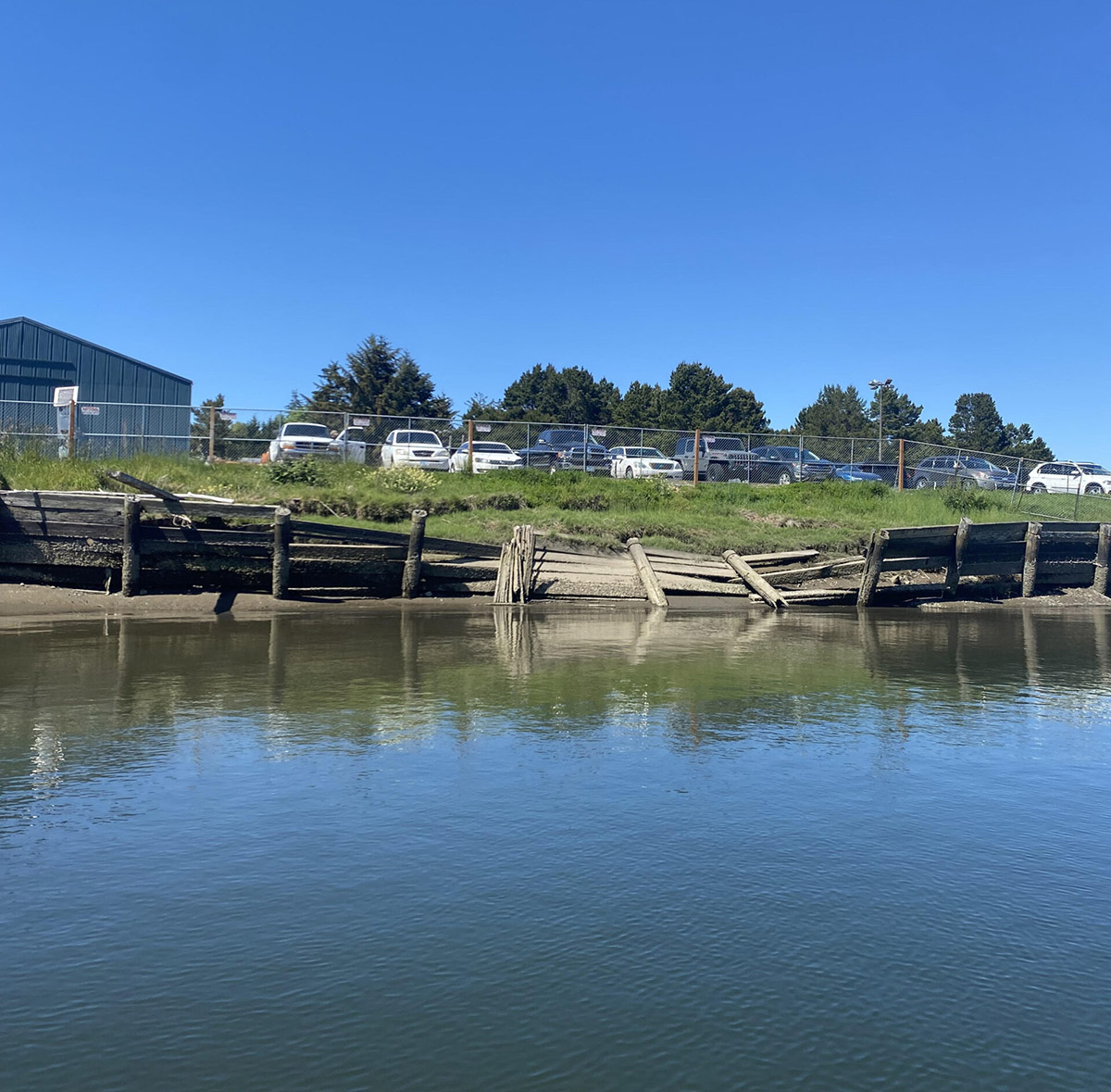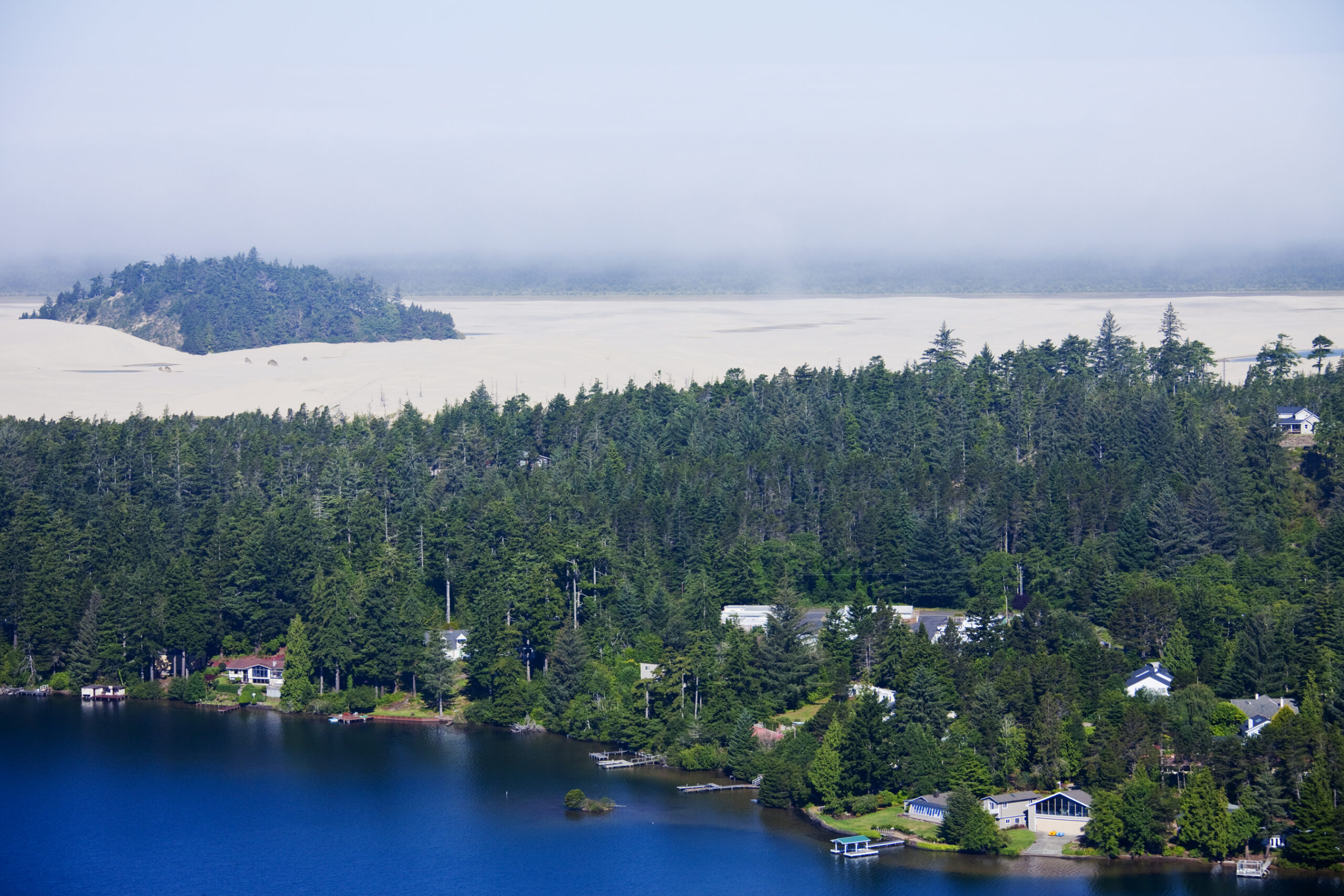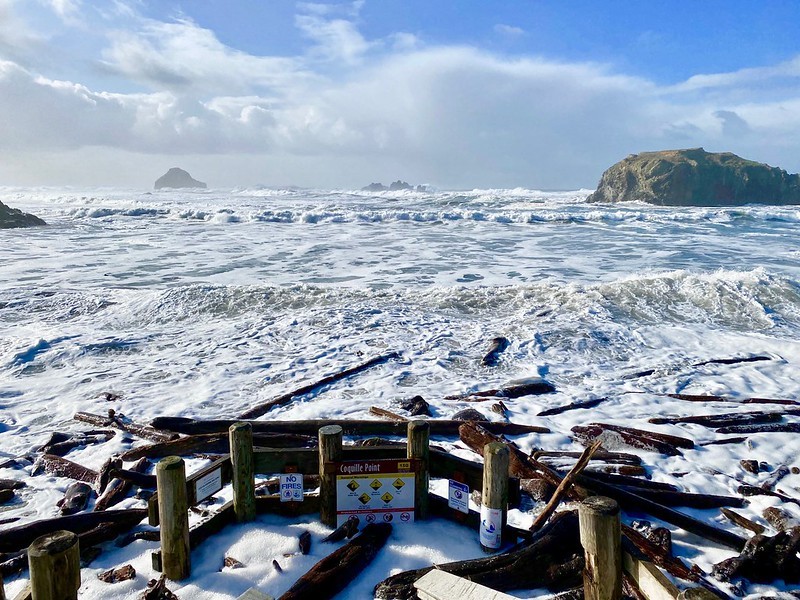Natural Disasters
Preparing for Tidal Impacts and Coastal Erosion
There are steps you can take to prepare your property if you are living or working in an area susceptible to beach erosion or tidal impacts, but be sure to check with the Oregon Parks and Recreation Department (OPRD) about local policies and permitting requirements before taking any mitigation action. Statewide Planning Goal 18 permits shoreline armoring (installing shoreline protective structures) only where development existed prior to 1977[2]. This is to deter from further beachfront development, which often exacerbates coastal erosion and puts residents at risk of loss of property. You can learn more about relevant policies and beach erosion control permitting in the Department of Land Conservation and Development’s “Guidebook on Erosion Control Practices of the Oregon Coast”.
Here are some options for mitigating tidal impacts and coastal erosion:
-
- Shoreline Armoring
-
- Building shoreline protective structures or beachfront protective structures (BPS), defined as “A static structure that is intended to remain in a fixed position with the purpose of redirecting wave energy and to minimize or eliminate coastal erosion risk to development. BPS are purposefully constructed and intended to maintain that form over time. This includes, but is not limited to, rip-rap revetments, seawalls, groins, breakwaters, jetties, bulkheads, geotextile sandbags, sand burritos, gabions, and concrete or mortar reinforcement such as shotcrete.”
- Shoreline protective structures are expensive to install and require a permit and approval from local land-use planners and OPRD.
- Again, you cannot build beachfront protective structures in areas developed after January 1, 1977.
-
- Dynamic revetment, aka “cobble berms” or “rubble beaches”
-
- A non-structural mitigation effort that involves covering the beach area in front of the property with cobble or gravel.
- The cobble/gravel slows the process of erosion by reducing wave energy, working with nature rather than against it[3].
- Dynamic revetment can be costly and requires regular maintenance to maintain “the volume and placement of the cobbles at an effective level”.
-
- Vegetation and natural landscaping
-
- Planting trees or grasses, or utilizing dunes or other natural features to stabilize the shoreline.
- This is a popular option, but is limited in its effectiveness. Due to the intense winds and waves along the Oregon Coast, cultivating this vegetation is challenging. Vegetation and natural landscaping are most viable for shoreline areas with lower wave energy.
-
- Structural adaptations to your property
-
- Raising your house or business on pilings to prevent flooding due to coastal erosion.
- Structural adaptations are costly, and require approval from your local land-use planners.
-
- Managed Retreat
-
- The process of physically moving houses further inland as coastal erosion continues.
- Another costly option that requires extensive permitting and approval from local planning officials.
-
- Shoreline Armoring
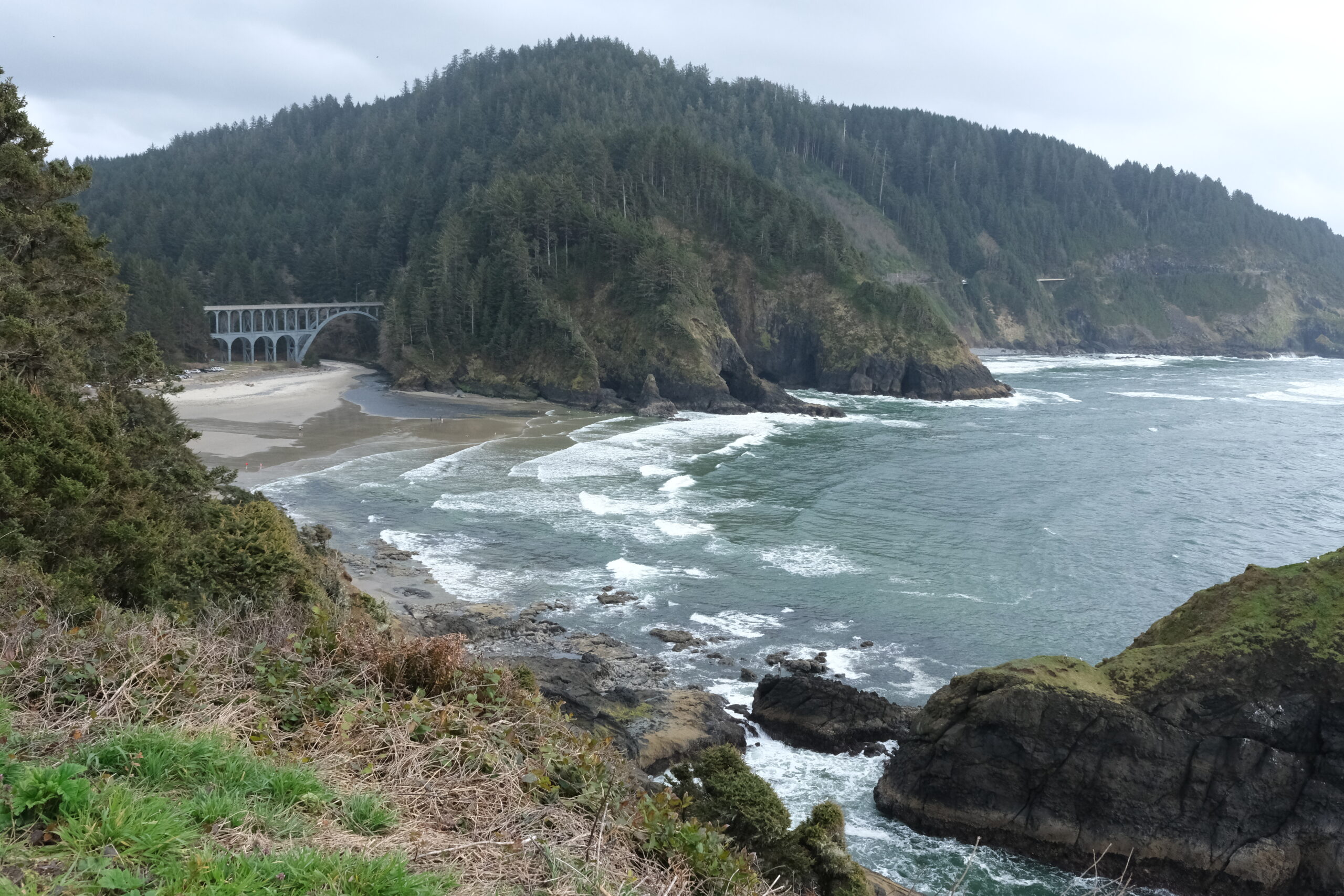
Figure 4 – Cape Creek Bridge from Heceta Head Lighthouse
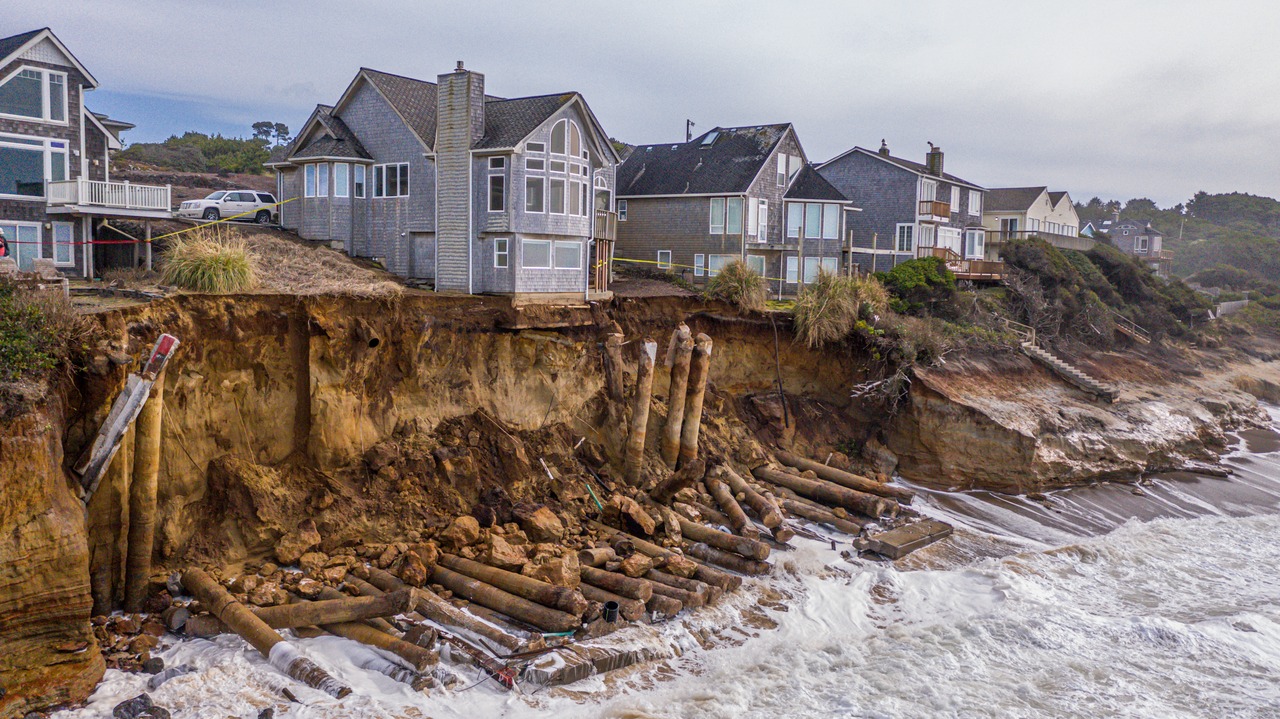
Figure 5 – 2021 Seawall Collapse in Lincoln, Photo by Casey Felton, New-Times in Newport, Oregon
Always check in with your local land-use planning officials as well as the Oregon Parks and Recreation Department before beginning any sort of coastal-erosion mitigation effort. You can view OPRD’s Ocean Shore Permit Application and Instructions here.
Oregon SeaGrant has put together a flow chart to help guide people towards the appropriate mitigation efforts based on existing policies. You can view the flowchart here.
Want to see where shoreline armoring is being utilized? Use the Coastal Atlas Ocean Shores map to view existing BPSs and BPS eligibility along the Oregon Coast.
You can report coastal erosion conditions to the Oregon Hazards Reporter.
More information about tidal impacts, coastal erosion, and mitigation efforts.
- https://www.coastalatlas.net/index.php/learn/topics/14-coastalerosion
- https://www.oregon.gov/dogami/coastal/pages/coastalhazardsmain.aspx
- https://oregonexplorer.info/content/coastal-erosion?topic=4129&ptopic=140#:~:text=Coastal%20erosion%20is%20a%20natural,erosion%2C%20landslides%2C%20and%20flooding.
Footnotes
[1] Coastal Erosion, Oregon Coastal Atlas.
https://www.coastalatlas.net/index.php/learn/topics/14-coastalerosion
[2][3] Guidebook on Erosion Control Practices of the Oregon Coast, Oregon Department of Land Conservation and Development.

